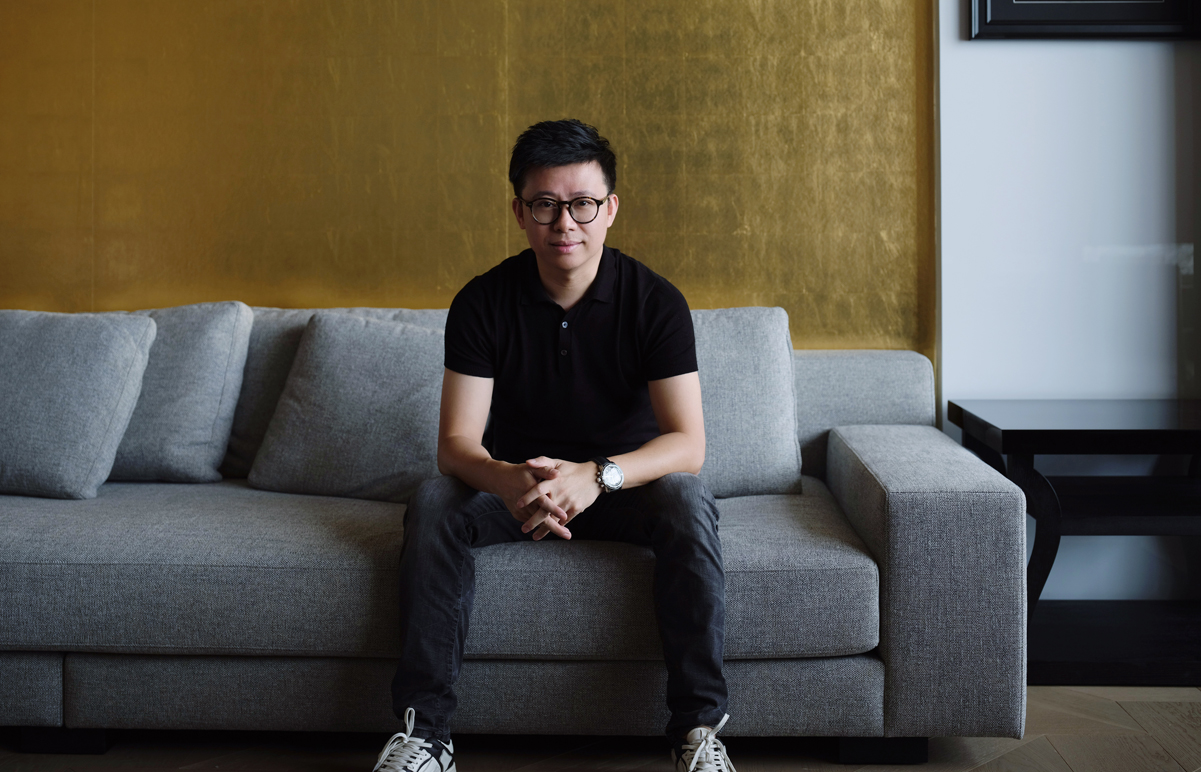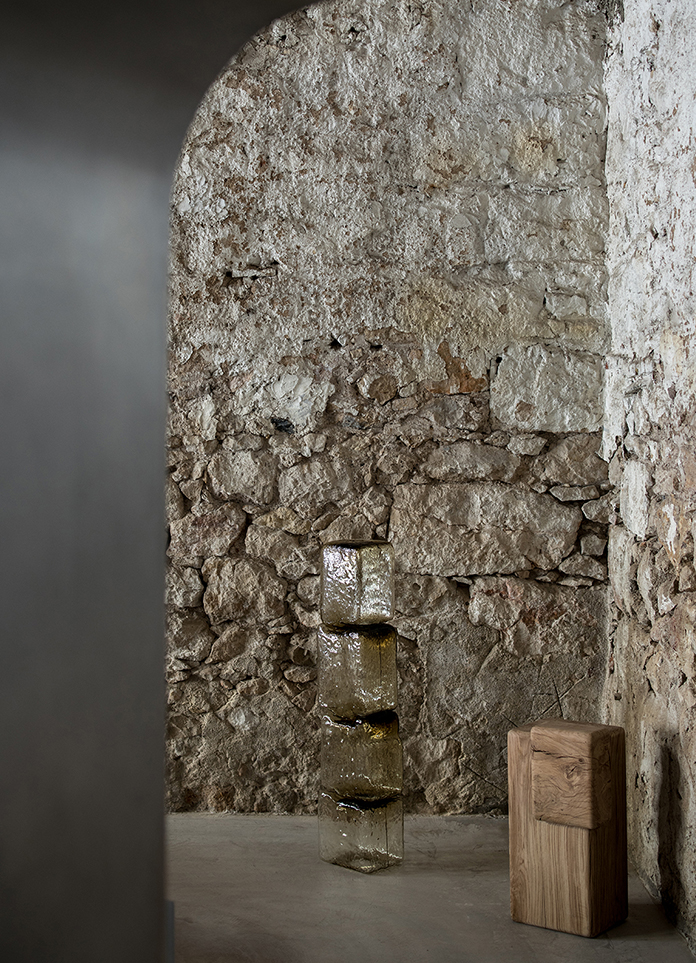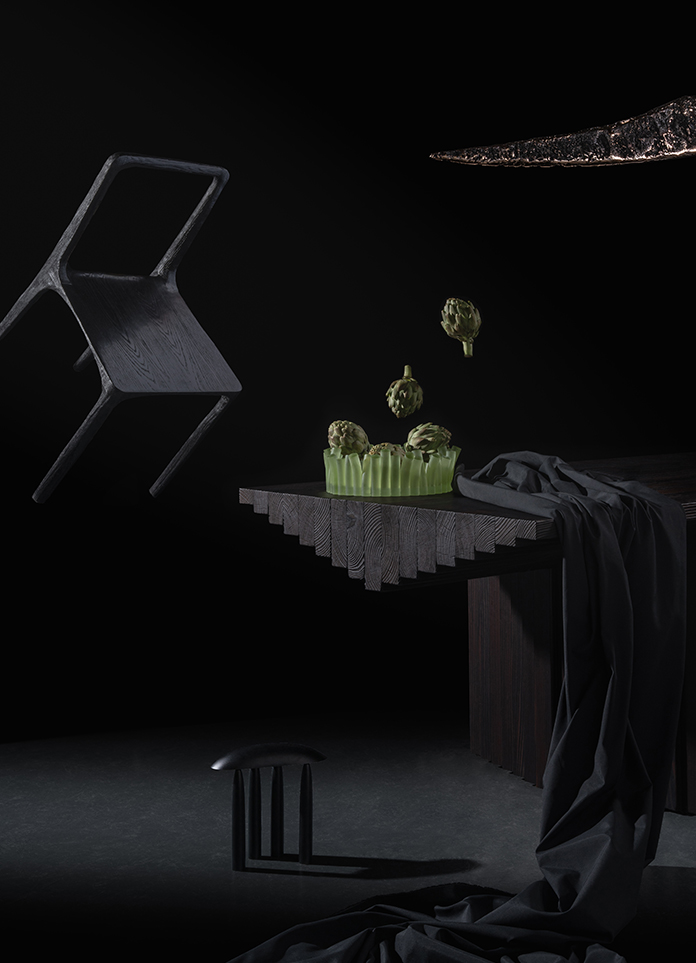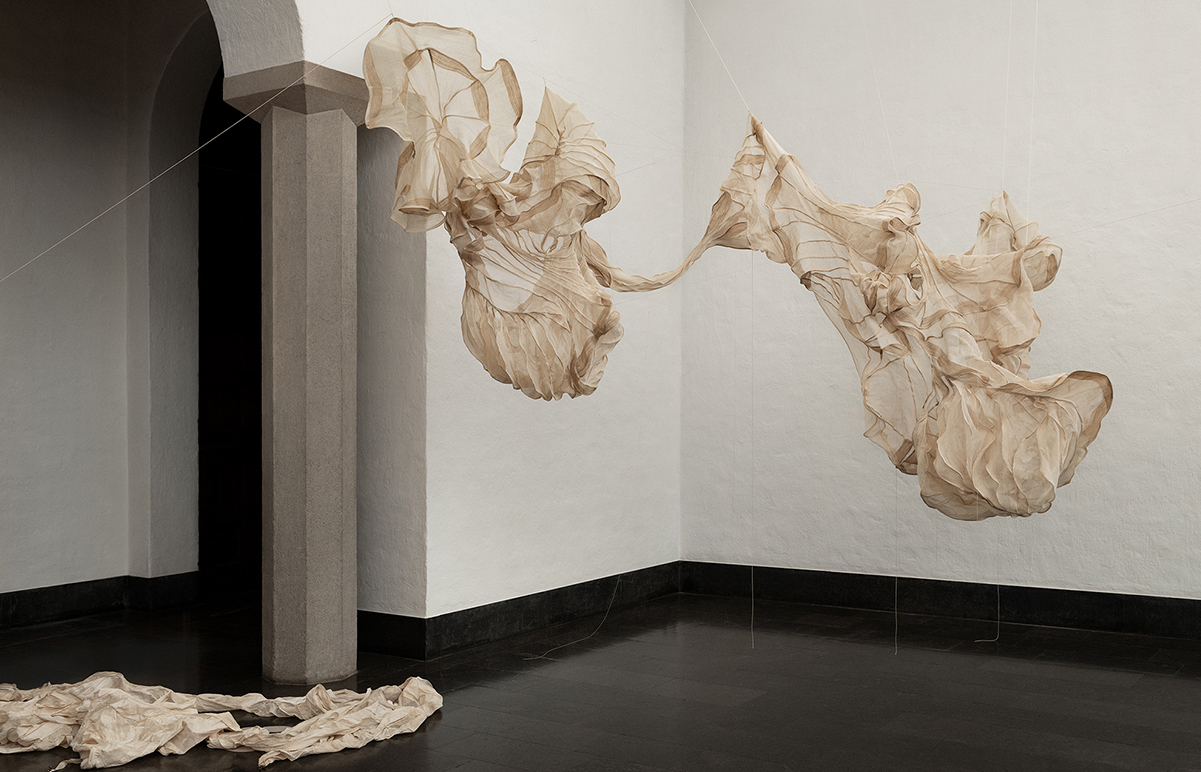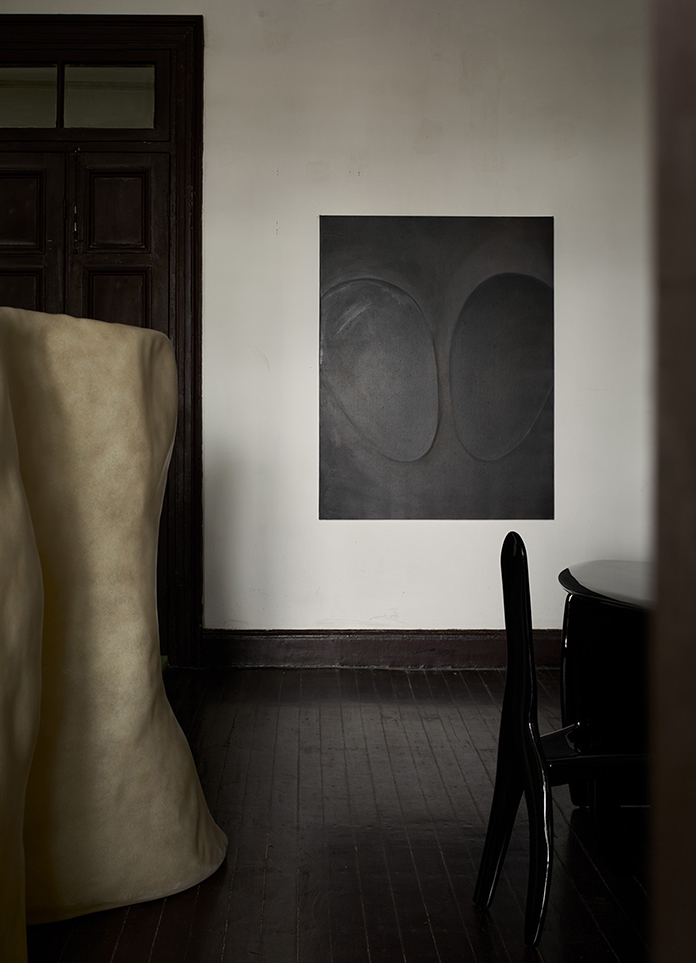Marius Ritiu
I consider myself not only a sculptor but also a storyteller, one who wishes to create somewhat open-ended tales, later finalized in the mind of the viewer. --Marius Ritiu
Marius Ritiu‘s own experience as a travelling artist and an immigrant, continuing crossing borders and witnessing variations in culture, religion, nation, race– undoubtedly informs and anchors his practice. But what it more importantly grounds is the quest essential to Marius Ritiu’s work to comprehend and express the global through the local, the universal through the particular, the familiar through the alien. He believes that these are all connected.
- Art: Marius Ritiu


How do you perceive boundaries?
Words like “boundary” or “border” take me back to my childhood, when because of the accident that I suffered (I stabbed myself in the right eye with a pocket knife at age four), my parents had to bring me to a hospital that could perform cornea transplants. Before 1989 borders were closed in Romania, so it took a few weeks until my father managed to get me over the border with Hungary to a hospital in Debrecen, where I finally had the cornea transplant that I desperately needed.
A few years back I started reading about what astronauts are calling “the overview effect”. They describe it as a life changing experience. The concept of the "overview effect" has gained attention in recent years, particularly among astronauts who have had the opportunity to view Earth from space. This phenomenon is described as a cognitive shift that brings about a profound and life-changing experience. Researchers have characterised it as a state of awe, accompanied by self-transcendent qualities, triggered by a visually striking stimulus. When personally experiencing the Earth from space, astronauts commonly report feelings of appreciation, a heightened perception of beauty, overwhelming emotions, and an increased sense of connection to both other people and the planet as a whole. This effect has the potential to bring about changes in one's self-concept and value system, ultimately leading to transformative experiences.
My own experience as a travelling artist and an immigrant, continuing crossing borders and witnessing variations in culture, religion, nation, race, has been a source of information and inspiration for my art practice. I often say that for remodelling our society and achieving peace on Earth we would need to send 7.8 billion people to space for a few days, so that they can see with their own eyes how insignificant we are as a planet and as a human race in the vastness of the universe and how ridiculous all these imaginary dividing lines that we invented here on Earth are. Instead of being celebrated, our differences are made into symbols and ideologies meant to divide; they are turned into borders.
The process of defamiliarising the familiar and subsequently creating a new sense of familiarity, besides challenging preconceived notions, what does it mean to you?
Defamiliarization, as defined by the Russian formalists who coined the term, is an artistic technique that involves presenting familiar objects or concepts in an unfamiliar or strange manner. This technique aims to provide audiences with new perspectives and encourage them to see the world in a different light. It is considered to be the central concept of art and poetry.
In 2018 I started a project called “The Alley of the Universe”. The story behind this project has as a central figure a vampire who grew up on a street called “The Alley of the Universe” situated in Transylvania. The vampire feels an overwhelming impulse, (other than the usual one, which is to go in search of blood) to look for discarded and forgotten ordinary objects like cigarettes, spaghetti, a dirty tennis ball, broken bird houses and a pitchfork, among other things. Somehow all these ordinary things found themselves, unknowingly, first in outer space and then shortly thereafter falling to Earth, randomly, without reason.
Now mysteriously all these ordinary objects fell to sites situated near observatories around the world in cities like Jersey City, New York, Lisbon, Paris, Bucharest, Brussels. And on Earth the ordinary objects are suddenly alchemically transformed, covered in copper, statuesque, becoming really important pitchforks, bags, shoes, and most of all really important hangers. And interestingly enough after they all fell to Earth, these inanimate objects also became suddenly sentient, so they could not only think, but they could feel emotion and this unknown force that drove them to all come together in some way. Eventually they found each other in this new Alley of the Universe, living there happily ever after.
The process behind the “Sisyphus” series is a similar one: at a first sight I’m making “just” rocks. But I move them around the world, like the Greek protagonist of the famous myth. Their size, the way I contextualise them both conceptually and physically, the technique that I employ to produce them, labeling them as DYI meteorites, they all work together to defamiliarise the familiar and blow away the grey dust of our monotonous lives, aiming at teleporting the viewer (even if only for a second) to another dimension.


Copper is a natural mineral as well as an artistic medium, how do you interpret the process of remodelling the copper from “solid-liquid-solid"? And how do you establish the connection between its materiality and artistry?
Around the time of the 1989 Revolution in Romania, I had my first experience with copper. This was during the last years of communism, a challenging time for my family as my parents sought creative solutions to improve our living conditions. I can still recall my father's frustration with the nightly power cuts at 18:00. In response to the government's energy-saving measures, my father ingeniously rigged a truck battery on our balcony and connected a copper wire to it, leading to a small light bulb in the kitchen. This provided enough light for my mother to cook, despite the electricity restrictions.
Copper is believed to be the first metal mined and crafted by humankind, being one of the best heat and electricity conductors. Its incorporation into technology (communication, transport) has enabled and increased the mobility of ideas, goods, and people, impacting the nature and physicality of borders. Some scientists are calling copper “the red metal that connects the Earth”.
It has become important to my work for both its physical and philosophical characteristics. In the classical world, alchemy associated seven metals with the planets (silver/Moon, mercury/Mercury, copper/Venus, gold/Sun, iron/Mars, tin/ Jupiter, lead/Saturn). As one of these materials, copper has a direct association both with human history and the cosmos.
Another characteristic that attracted me to work with this material is the fact that copper is 100% recyclable. It is one of the few materials that can be recycled repeatedly without any loss of performance.
The method I use for giving shape to the copper is a variation of the Repoussé technique, used for example in the past by Frédéric Bartholdi to create the Statue of Liberty. The French sculptor was pressing and hammering the copper sheets into wooden molds, whereas I anneal and hammer the copper onto boulders and tree trunks (existing natural shapes) which I then remove and reassemble in various sculptural volumes.
It’s a technique that I developed over time partially due to my nomadic lifestyle. I don’t need a highly equipped studio to produce my works. I use hammers and fire, going back to the basics, away from 3d printers and high level technology and returning to manual labour. Some of my sculptures have up to 10.000.000 hammer hits.

Your works often contain rich narratives; how do you infuse them?
The narratives within my works often draw inspiration from real events that occurred before or during the creation of each piece. Occasionally, I modify these real-life stories or events for dramatic effect and incorporate references to characters from ancient Greek myths. I frequently find myself entangled in absurd situations, which I then incorporate into my work.
Throughout my artistic journey, I have always been captivated by outer space and the possibility of extraterrestrial life. In 2018, while attending the Ars Electronica Festival in Linz, I had the privilege of meeting a scientist who had previously worked for NASA. Our conversations delved into various topics such as meteors, meteoroids, meteorites, asteroids, planets, and space debris. I recall him carrying a meteorite in his backpack, which he had possessed for several decades. This particular meteorite originated from a meteor shower that occurred in Russia during the 1940s. It was during that particular moment that the concept of crafting my own copper meteorites came to fruition.
These cosmic rocks have fascinated me for various reasons, one of them being their power to wipe out life on Earth in a blink of an eye, which should give one food for thought and trigger a feeling of humbleness. This leads me to the words of Neil deGrasse Tyson: “Even with all our technology and the inventions that make modern life so much easier than it once was, it takes just one big natural disaster to wipe all that away and remind us that, here on Earth, we're still at the mercy of nature.” I affectionately label my “rock-like” hand hammered copper sculptures series entitled “Sisyphus”, as meteorites, as they find their place within gallery spaces, nestled between houses and fences, or even perched atop shopping carts.
What was the starting point for your collaboration with Ileana Moro on "Allienim", a visualisation of the unknown universe?
My wife and I hold a shared perspective on the world and its mysteries. Our daily conversations revolve around art, life, and the vast cosmos, often sparking new ideas and projects. It was during our time in Paris in 2022, while participating in a residency program, that we coined the term "ALLIENIM." From there, we embarked on a gradual exploration, envisioning the appearance of these functional art pieces that originate from otherworldly realms.
Our life stories share many similarities. After completing our studies, we both left our native countries and have since resided in different locations across the United States and Europe. Additionally, we both hold the unique position of being the sole artists in our respective families. Furthermore, we share a deep fascination with the enigmatic nature of the universe.
We were aiming to work on a project that was slightly drifting away from our own practices as solo artists, where we could explore new territories, gravitating around what we could call “functional art”.
















